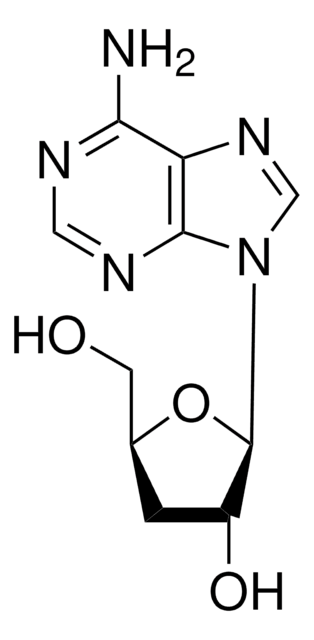S8269
Ethyl stearate
≥99% (capillary GC)
Synonym(s):
Ethyl octadecanoate, Stearic acid ethyl ester
Sign Into View Organizational & Contract Pricing
All Photos(2)
About This Item
Linear Formula:
CH3(CH2)16COOC2H5
CAS Number:
Molecular Weight:
312.53
Beilstein:
1788183
EC Number:
MDL number:
UNSPSC Code:
12352211
PubChem Substance ID:
NACRES:
NA.25
Recommended Products
biological source
plant
Quality Level
Assay
≥99% (capillary GC)
form
powder
bp
213-215 °C/15 mmHg (lit.)
mp
34-38 °C (lit.)
functional group
ester
lipid type
saturated FAs
shipped in
wet ice
storage temp.
2-8°C
SMILES string
CCCCCCCCCCCCCCCCCC(=O)OCC
InChI
1S/C20H40O2/c1-3-5-6-7-8-9-10-11-12-13-14-15-16-17-18-19-20(21)22-4-2/h3-19H2,1-2H3
InChI key
MVLVMROFTAUDAG-UHFFFAOYSA-N
Looking for similar products? Visit Product Comparison Guide
Caution
Low melting solid
Storage Class Code
11 - Combustible Solids
WGK
WGK 2
Flash Point(F)
235.4 °F - closed cup
Flash Point(C)
113 °C - closed cup
Personal Protective Equipment
dust mask type N95 (US), Eyeshields, Gloves
Choose from one of the most recent versions:
Already Own This Product?
Find documentation for the products that you have recently purchased in the Document Library.
S Aliaskarisohi et al.
The journal of physical chemistry. B, 115(40), 11631-11637 (2011-08-31)
In a previous work, Muruganathan and Fischer observed laser-induced local collapse of a methyl stearate monolayer. These experiments opened the possibility of studying the collapse mechanism in a highly controlled manner, since the laser intensity can be easily varied and
Yan-Bing Zhang et al.
Journal of Asian natural products research, 8(1-2), 119-123 (2006-06-07)
A new phenolic glycoside (1), mahkoside A, together with six known compounds including mangiferin (2), kaempferol-3-O-beta-D-glucoside (3), dodecanoic acid (4), palmitic acid (5) ethyl stearate (6) and sucrose (7), were isolated from the pit of Mahkota dewa. Their structures were
The dual role of macrophages in the sporozoite-induced malaria infection. A hypothesis.
J P Verhave et al.
International journal of nuclear medicine and biology, 7(2), 149-156 (1980-01-01)
Differences in the fatty acid composition of fatty acid ethyl esters in organs and their secretions.
M Laposata et al.
Alcoholism, clinical and experimental research, 24(10), 1488-1491 (2000-10-25)
Fatty acid ethyl esters (FAEE) are nonoxidative ethanol metabolites that have been shown to be long term markers of ethanol intake and have been implicated as mediators of ethanol-induced cell injury. Previous studies have indicated that the fatty acid composition
Aya Ouchi et al.
Lipids, 44(10), 935-943 (2009-09-19)
A kinetic study of the prooxidant effect of alpha-tocopherol was performed. The rates of allylic hydrogen abstraction from various unsaturated fatty acid esters (ethyl stearate 1, ethyl oleate 2, ethyl linoleate 3, ethyl linolenate 4, and ethyl arachidonate 5) by
Our team of scientists has experience in all areas of research including Life Science, Material Science, Chemical Synthesis, Chromatography, Analytical and many others.
Contact Technical Service








